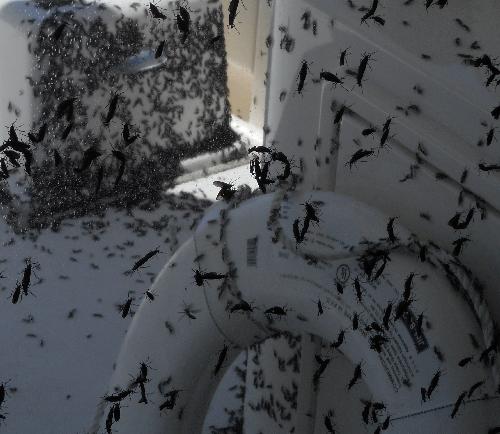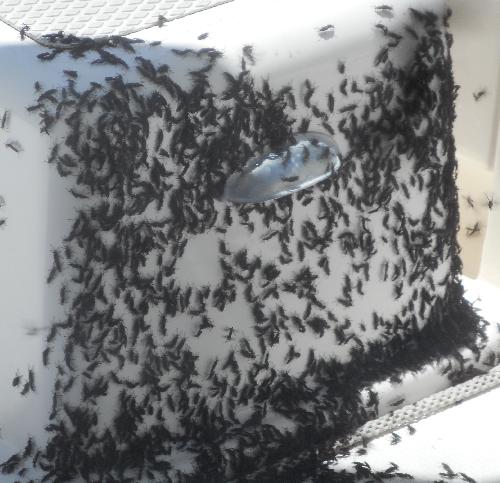

PSU 307 Training with Auxiliary Vessel Rovon
08 May 2014
This was a 3 day training event with Port Security Unit 307. Auxiliary Vessel Rovon with crew worked with PSU 307 off of St.Petersburg. Rovon was berthed Wednesday & Thursday evening at the city marina. The training exercises consisted of Rovon being escorted by PSU assets as others tried to break into the security cordon. There were initially 5 PSU vessels but one developed mechanical problems so we worked with the remaining 4 vessels who alternated being the escorts and intruders.
There were 2 incidents where private vessels entered the training area and had to be escorted out. We had to pause training while a cruise ship Carnival Princess exited Port of Tampa. The weather for the training exercises was excellent however we had one evolution which required us to anchor and be a stationary asset. After a short time being stationary we were inundated with " Lovebugs" which covered our decks, windows etc. See pictures below.
Wednesday: Clark (coxswain) crew Prior, Mackey, Murray & Warner. H (trainee)
Thursday: Clark (coxswain) crew Prior, Warner.G & Murray
Friday: Clark (coxswain) crew Prior , Montembeault.R & Murray
=============================================================================================================
Port Security Unit 307 is a CG Reserve unit that provides waterside and shoreside protection to key assets, such as pier areas, high value vessels, and harbor entrances. It is an Expeditionary Warfare Unit serving as part of the Coast Guard's Deployable Specialized Forces and is homeported at Air Station Clearwater. The unit is air deployable and can be anywhere in the world, mission ready, within 96 hours. It is self sufficient for 30 days once at destination which means that they can be sent anywhere, anytime and provide their own field berthing and messing as well as operations, communications, logistics and maintenance. They operate well armed 32 FT Transportable Port Security Boats (TPSB) powered by two 315 HP inboard diesel engines with outdrives. Normal crew complement is four.
==========================================================================================================
The “lovebug” (Figure 1) is a fly in the family Bibionidae that is easily identified by its black, slender body and red thorax. These small flies, also known as March flies, are closely related to mosquitoes and gnats. The males are about 1/4 inch in length, while females are 1/3 inch in length. There are two known species of lovebugs in the United States. One is a native species, and the other is an invasive species that first appeared in southern Louisiana during the 1920s. The outbreak soon spread southward, crossing deep into Mississippi and Alabama, and finally reaching Florida in 1947. They have since migrated northward, reaching from Georgia to South Carolina. Both species have two key outbreaks in population a year: once during April–May and the next in August–September. They are often found near or by highways and are a nuisance and hindrance to drivers.
 |
 |